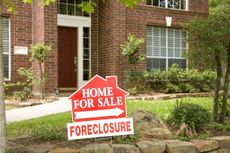6 Good Reasons to Buy a Home Now
Houses are more affordable than they’ve been in a decade.

1. Prices have nearly hit bottom.
In most areas, most of the excess has finally been wrung out of the market. But if you’re buying a first home or looking to trade up, there’s no need to rush. Although prices may fall some more -- blame foreclosures still working their way through the system and tighter credit -- they won’t fall by much. Fiserv Case-Shiller, which tracks home prices, forecasts that the median price nationwide will ratchet down for about six more months, then stay flat for three or four years.
In most of the cities where home values experienced a double dip after the expiration of the home buyer’s tax credit in mid 2010, median prices won’t fall below their 2009 or 2010 lows, says David Stiff, Fiserv’s chief economist. These cities include San Francisco, San Jose, San Diego and Washington, D.C. But in cities with lingering oversupply of homes for sale, Fiserv forecasts a decline of 10% or more in the median home price (for the year ending March 31, 2012). These cities include Riverside–San Bernardino, Cal.; Las Vegas; and Miami.

Sign up for Kiplinger’s Free E-Newsletters
Profit and prosper with the best of expert advice on investing, taxes, retirement, personal finance and more - straight to your e-mail.
Profit and prosper with the best of expert advice - straight to your e-mail.
2. Houses are affordable again.
Homes haven’t been this affordable since 1991. Economists often define affordability as the ratio of median home price to median family income. According to Fiserv Case-Shiller, the U.S. ratio now stands at 2.6 -- down from a peak of 4.1 in mid 2005 and just under the long-term average of 2.8. Of course, some areas continue to defy affordability. In California’s coastal cities and the New York metro area, the ratio is 5 or more. Average mortgage payments are another way to look at affordability. Since the housing market’s peak in 2006, the average principal-and-interest payment in the U.S. has fallen from $1,063 to $645.
Renters considering the jump to homeownership may be encouraged by the price-rent ratio, or the median home price divided by the median annual rent. In 2005, the national median home price had inflated to nearly 21 times the median annual rent, according to Marcus & Millichap, a commercial real estate brokerage company in Encino, Cal. Since the bust, the ratio has deflated to 14, less than the historical average of 15. During the same period, the difference between the median monthly mortgage payment and median monthly rent fell from $745 nationally to $102. Marcus & Millichap expects rental vacancy rates to hit prerecession levels this year, allowing landlords to raise rents by an average of 3.5%.
3. Mortgage rates won't go any lower.
For the past couple of years, interest rates have hovered at levels last seen when the veterans came home from the Korean War. According to HSH.com, which tracks mortgage rates, at the beginning of August the national average 30-year fixed rate was 4.5%. FHA loans, which require only a 3.5% down payment, had a 4.3% rate. Adjustable-rate mortgages are even cheaper, and even rates for jumbo mortgages have hit lows not seen since the 1980s.
Freddie Mac forecasts a 30-year fixed rate of 5% by year-end and 6% by late 2012. Standard & Poor’s downgrade of the U.S. credit rating won’t have an immediate effect on rates because of the weak economy (see Ripple Effects of the U.S. Debt Downgrade).But credit is tighter, and you’ll need a credit score of 740 or more and a down payment of at least 25% to nab the lowest rates. If you fall short of that, you’ll pay interest-rate risk premiums if the bank plans to sell your loan to Fannie Mae or Freddie Mac. For example, lenders must charge an extra 0.25 point if a borrower has a 740 credit score but puts down less than 25% (but at least 20%).
4. It's a buyer's market.
Demand is low; supply is high. In early summer, the National Association of Realtors reported that sales of existing homes (single-family houses and condos) fell by 9% from the year before. NAR also reported 9.5 months’ supply of homes. That’s how long it would take to sell all the homes on the market at the current pace of sales, and it strongly favors buyers. (Four to six months’ supply is considered balanced between buyer and seller.)
With so much selection, you’ll find more properties in good school districts or near your job, or homes that offer added value, such as a mother-in-law suite, says Thomas Popik, research director with the Campbell surveys of real estate professionals. You’ll spend less time shopping and competing against other bidders. And you don’t have to waste time with sellers who set unrealistic prices (although they’re still out there).
One caveat: If you’re searching among entry-level homes, which had more extreme price declines than upper-end houses did over the past year, you may face stiff competition from investors. They typically pay cash, which makes them attractive to sellers who want to close the deal fast. However, says Popik, you may find opportunities in homes that were bought and fixed up by investors, who intended to flip them but have had difficulty making a sale.
5. You may find a distressed property.
Bank-owned foreclosures (or REOs, for “real estate owned” properties) sell for an average discount of 35% off the per-square-foot price of conventional homes for sale, according to RealtyTrac. In the first half of 2011, lenders owned about 870,000 REOs but listed only about one-fifth of them for sale, concentrated in such high-foreclosure states as Arizona, California, Florida, Michigan, Nevada and Ohio; even with the slowdown in the foreclosure pipeline due to legal-processing issues and new supply exceeds sales. Find more on buying foreclosures.
Short sales, or homes sold with lenders’ permission for less than their owners owe on their mortgages, have also grown in number. Lenders have become more amenable to them as they seek to avoid the often huge losses associated with foreclosures, says Rick Sharga, of RealtyTrac. Short sales offer buyers less of a bargain than REOs, but the homes tend to be in better condition. Banks may still take two to six months to sign off on a short sale, so patience is imperative.
6. Homeownership is still attractive.
A home is the biggest purchase most people ever make. But deciding whether and what to buy isn’t purely a financial decision, says Chris Herbert, research director at Harvard’s Joint Center for Housing Studies. When you own a home, you can control your living environment and security, upgrade and change your home as you see fit, and create a sense of rootedness in your community.
You can offset some of the cost of homeownership by deducting mortgage interest. But don’t mistake a home for an investment, at least not in the short run. “If your goal is to jump in and get a return of 6% annually, that’s a bad idea,” says Fiserv’s Stiff, given the forecast for weak price appreciation. Instead, you need to commit to owning the home for at least five to seven years to ride out any further price declines and recoup your down payment and transaction costs. If you think that you might need a bigger home before that time to accommodate a growing family or that you might have to move to another area for your job, don’t buy unless you’re willing to become a long-distance landlord.
Shop carefully, and be patient. Exclusive buyer’s agent Michael Crowley of Spokane, Wash., tells buyers it may take three to four months to find the right house. “We can be in a hurry, or we can be particular, but we can’t be both,” he says.
Get Kiplinger Today newsletter — free
Profit and prosper with the best of Kiplinger's advice on investing, taxes, retirement, personal finance and much more. Delivered daily. Enter your email in the box and click Sign Me Up.

-
 Stock Market Today: Stocks Advance on Light Volume Thanks to Big Tech
Stock Market Today: Stocks Advance on Light Volume Thanks to Big TechEquities rose in a mostly sleepy session as Mag 7 names led the way.
By Dan Burrows Published
-
 Where Starbucks Workers are Striking and What It Means For You
Where Starbucks Workers are Striking and What It Means For YouStarbucks Workers United organized a nationwide strike through Christmas Eve, impacting locations in nine states and growing until Starbucks meets demands.
By Sean Jackson Published
-
 How to Find Foreclosed Homes: Best Foreclosure Listings Sites
How to Find Foreclosed Homes: Best Foreclosure Listings SitesMaking Your Money Last Find foreclosed homes for sale on these foreclosure listing websites. Search for properties on these free, paid or government sites.
By Bob Niedt Last updated
-
 Luxury Home Prices Rise as the Rich Dodge High Mortgage Rates
Luxury Home Prices Rise as the Rich Dodge High Mortgage RatesLuxury home prices rose 9% to the highest third-quarter level on record, Redfin reports, growing nearly three times faster than non-luxury prices.
By Kathryn Pomroy Published
-
 Four Tips for Renting Out Your Home on Airbnb
Four Tips for Renting Out Your Home on Airbnbreal estate Here's what you should know before listing your home on Airbnb.
By Miriam Cross Published
-
 Five Ways to Shop for a Low Mortgage Rate
Five Ways to Shop for a Low Mortgage RateBecoming a Homeowner Mortgage rates are high this year, but you can still find an affordable loan with these tips.
By Daniel Bortz Last updated
-
 Looking to Relocate? Plan for Climate Change
Looking to Relocate? Plan for Climate Changebuying a home Extreme weather events are on the rise. If you’re moving, make sure your new home is protected from climate change disasters.
By Rivan V. Stinson Published
-
 Retirees, A Healthy Condo Has a Flush Reserve Fund
Retirees, A Healthy Condo Has a Flush Reserve FundSmart Buying Reserve funds for a third of homeowner and condo associations have insufficient cash, experts say. Here are some cautionary steps you should take.
By Patricia Mertz Esswein Published
-
 Cash Home Buyers: New Services Offer Help Making All-Cash Offers
Cash Home Buyers: New Services Offer Help Making All-Cash OffersBecoming a Homeowner Some firms help home buyers make all-cash offers on homes. Weigh the fees before you sign on.
By Emma Patch Published
-
 Home Sale Prices in the 50 Largest Metro Areas
Home Sale Prices in the 50 Largest Metro AreasBecoming a Homeowner What’s happening in the market where you live?
By the editors of Kiplinger's Personal Finance Published